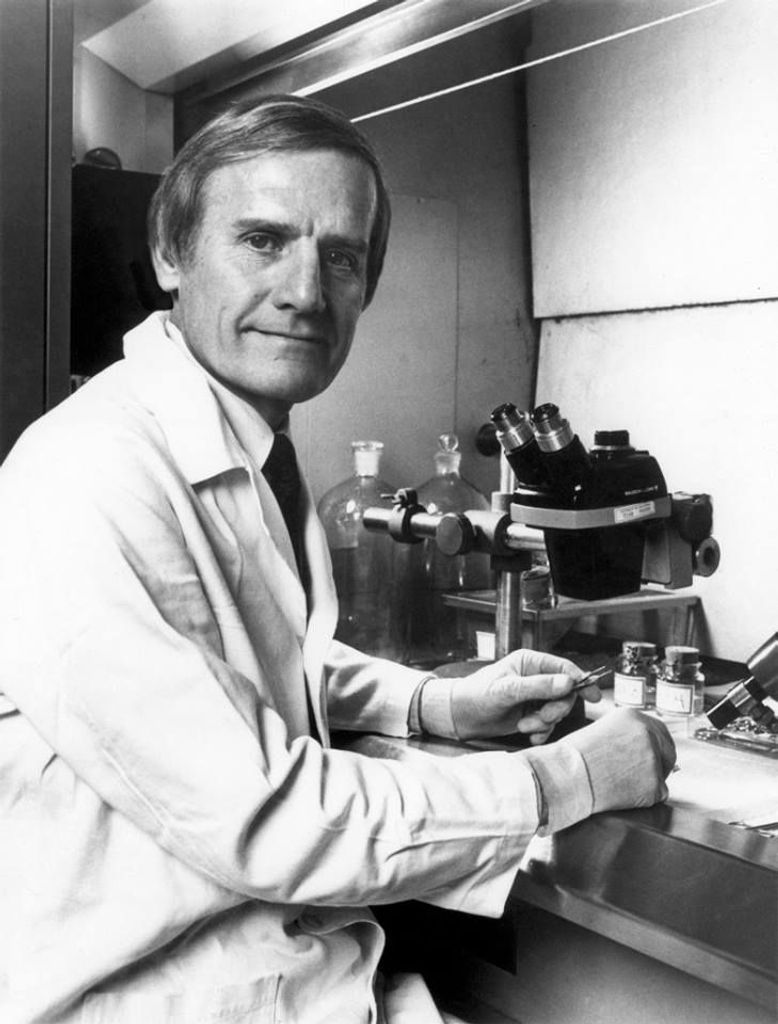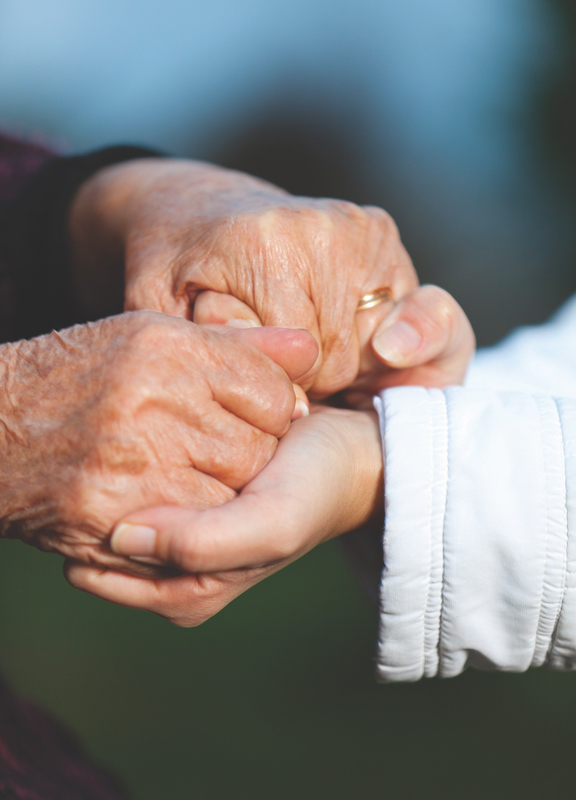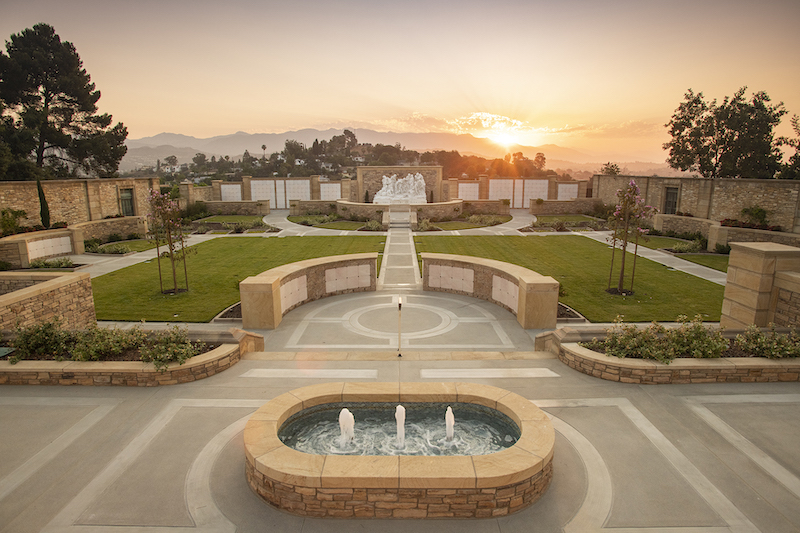

Richard Wain Young
Richard Wain Young
December 15, 1929 — May 18, 2016
Professor Emeritus of Neurobiology
University of California, Los Angeles, Medical School
December 15, 1929 – May 18, 2016
It is with great sorrow that the family of Dr. Young announces the passing of this great scholar, scientist, professor, husband, father, grandfather and friend. He died in his sleep on May 18, 2016 at age 86, at his home in Hollywood, surrounded by his close family.
Richard was deeply loyal and appreciative of his more than 55-year affiliation with the UCLA Medical School – the University that offered him an assistant professorship in the Dept. of Anatomy in 1960 and remained his professional home through his retirement and thereafter. This true-blue commitment is evident in his many papers, awards and even in the feel of his last published book, Human Origins and Evolution, which he wrote well into his 80's and published in 2014, elucidating his new theory of bipedalism (www.humanoriginsandevolution.com). It was fitting that at the end of his life he received world-class care at several UCLA Medical Hospitals, which helped him beat lymphatic cancer and multiple lung infections.
EARLY YEARS
Richard's ancestors were farm laborers, harness makers and mail carriers in upstate New York. His Father Festus Eugene Young (b1907) worked for the local telephone company, while his mother Dorothy Ahreet Little worked for the City while she raised Richard and his brother David. Richard was born in 1929, and grew up mostly in New Jersey. His easy athleticism and self-motivation served him well as the starting varsity quarterback on his high school football team, and laid the groundwork for a later passion for mountain climbing, hiking, and running. Richard was also known for his artistic talents, particularly his cartooning, often illustrating his school papers with original comics.
Richard joined the Marines at age 17 right out of high school in 1947. After three years of service, Richard left the Marines as a Staff Sergeant, only to be recalled into service for the Korean War, spending much of the next 13 months in Italy. Much in the way Bill Mauldin chronicled WWII, Richard used his humor and artistic talents to illustrate his military experiences.
As noted by his good friend and colleague, Dr. Dean Bok, many years ago (upon Richard's receipt of the Friedenwald Award In Ophthamology in 1976):
"I once asked Dick why he enlisted in the Marines rather than entering college immediately [after High School]. With his patented dry wit, he told me that he joined the Marines to prove a point like most young men of that age. A week later, after he had proven his point, they wouldn't let him out…. His mother tells me that he was very happy to make Sergeant, not because of the authority that went with it, but because sergeants were allowed to have seconds and thirds on ice cream in the mess
Using the G.I. bill to pay for college, Richard followed his military service by first attending Patterson State Teacher's College. (He later informed his sons that his choice of institutions was motivated by the "abundance of girls…and I had a car.") Richard thereafter transferred to Antioch College where he watched a beautiful young woman fall asleep in the 8:00 a.m. religious studies class. Richard married that young woman, Jennifer Blanchard Watanabe, in 1955, and raised four boys with her.
EDUCATION AND EARLY SCIENTIFIC EXPERIENCE
In 1956, Richard obtained a BA degree in biology from Antioch College where he was a research assistant at the Fels Research Institute, discovering in the process that he not only liked scientific research, but was pretty darn good at it. Richard thereupon pursued a Predoctoral Fellowship with the US Public Health Service at Columbia University, NY, completing a PhD program in human anatomy in 1959, followed by a National Science Foundation Postdoctoral Fellowship at the University of Bari (Italy) and the Karolinska Institute (Stockholm, Sweden), one of Europe's largest and most prestigious medical universities. Dr. Young subsequently received training in the use of radioisotopes at the Oak Ridge Institute of Nuclear Studies (1963) and in electron microscopic autoradiography at the Centre d'Etudes Nucléaires (Saclay, France). His wife and family of 4 boys all lived in France for the year in St. Remy les Chevreuses while Richard worked in Saclay. In 1977 Dr. Young was a Visiting Professor at Wolfson College, Cambridge University (England).
Dr. Young joined the faculty of the UCLA Medical School's Department of Anatomy (now the Dept. of Neurobiology) in 1960 as an Assistant Professor, passing up an opportunity to join the staff at Harvard University. (Having come of age in the harsh winters of the northeast with a snow shovel in his hand, Richard did mention that weather may have played a slight role in his decision to accept the offer at the Westwood campus, just 5 miles from the warm Pacific ocean.)
Dr. Young attained the rank of Professor in 1968. His primary teaching assignment was in microscopic anatomy, a course that he chaired for several years. Laboratory research, funded by the US Public Health Service and primarily based upon autoradiography, was applied to questions of cell biology in bones, teeth, the ocular lens, and particularly the visual cells of the retina.
BREAKTHROUGH DISCOVERIES IN OPHTHALMOLOGY
In 1967 Richard published his seminal paper on the continual renewal of the outer segments of the rods and cones. It was this contribution and the series of experiments and papers that were a natural consequence of it that not only opened up an entire new field of ophthalmological research and study around the world, but led to Dr. Young receiving the prestigious Friedenwald Award in Ophthalmology in 1976, one of the highest honors one can earn from the Association for Research in Vision and Ophthalmology. (For Dr. Dean Bok's Presentation of the Friedenwald Award to Dr. Young, see http://iovs.arvojournals.org/article.aspx?articleid=2158614).
As expressed by Dr. Bok in a 1999 article in Trends In Cell Biology entitled "Richard W. Young: And The Band Marched On":
"[Richard Young's] studies on the basic cell biology of the retina, particularly of retinal photoreceptor cells, spawned a flurry of research in the 1970s and '80s, engaging the efforts of investigators … in well over 20 laboratories in the United States and around the world, whose cumulative advances placed retinal cell biology at the forefront of vision research. These advances brought growing recognition of the retinal rod cell as an ideal system for studying the biosynthesis, intracellular trafficking and turnover of membrane precursors. They also provided a solid scientific foundation for understanding the etiology of a host of ocular pathologies, particularly those associated with aging."
[Trends in Cell Biology (Vol. 9) July 1999.]
Dr. Young received several other awards recognizing his teaching and research including multiple UCLA Golden Apple awards, a UCLA Distinguished Teaching award from the President of UCLA, the prestigious Bowman Lecture (awarded every other year since 1885 by The Royal College of Ophthalmologists in the UK), the Verhoeff Lecture of the American Ophthalmological Society, the Charles F. Prentice Medal (the American Academy of Optometry's most prestigious award for achievement in research), and an honorary Doctor of Science from the University of Chicago in 1980. The citation for this doctorate says: "Dedicated educator, innovative scientist, your research has revolutionized scientific views of the cellular process of the retina and the pathologic mechanisms of its hereditary and acquired disorders."
In 1980 Richard married Dr. Joyce Hagen, a Cal State Northridge Professor of Education and past Department Chair. Together they traveled the world, visited dozens of countries, and provided each other with companionship and conversation for 36 years. The marriage expanded Richard's family to include three stepchildren, seven grandchildren and a great grandchild born just before Richard's passing. This is in addition to Richard's four sons and eight grandchildren from his first marriage.
In 1991 Dr. Young published Age Related Cataract, a book which presented the practical implications of his research, with a focus on the harmful impacts of ultraviolet light on vision. Frustrated at what he saw as a medical industry more interested in treating eye diseases caused by ultraviolet radiation than preventing the diseases in the first place, Richard became a strong and vocal advocate for the use of "blue blocker" sunglasses as a simple means of vision disease prevention.
ANCORA IMPARO - DR. YOUNG'S NEXT CHAPTER
Dr. Young retired from his formal academic duties at UCLA in 1991, transitioning to a Professor Emeritus; and at aged 62, following his motto of ancora imparo, set out on a new career. In 1997, Dr. Young began directing his attention to the study of human evolution. Richard spent years researching and thinking about the evolution of mankind, particularly man's transformation from a quadruped to a biped.
Focusing his study on the anatomy of the hand, Richard explored the development of the hand's primary "throwing" and "clubbing" grips. Dr. Young posited that hominids who could free up their arms and hands for throwing and clubbing gained a reproductive advantage, and it was this advantage that led humans to evolve bipedal locomotion. Dr. Young published a number of influential articles on the subject, and collected his exhaustive research and conclusions in the book Human Origins And Evolution, published in 2014 when Dr. Young was 84 years old. In typical overachieving fashion, Dr. Young stippled and drew many of the illustrations in the book himself.
ONE WITH NATURE
Richard always felt a certain kinship with the mountains. Over the years, in addition to countless peaks in the U.S., Richard climbed 18,000 foot Mexican volcanoes Popocatépetl and Iztaccihuatl, Switzerland's majestic Matterhorn, Eiger, and Wetterhorn, and even trekked to the Everest base camp in Nepal. He also organized family and friend backpacking trips for years, ingraining into his children a love and respect for the natural world.
Richard was also an active runner for much of his life, running marathons and other road races, and played basketball for decades (organizing the UCLA Dept. of Anatomy basketball team, the Anatomates, for whom he would tie-dye t-shirts in the family bathtub for use as uniforms). An avid track fan, Richard attended track meets of all levels, including four Olympic Games and countless Olympic trials in Eugene, Oregon. He enjoyed these meets almost as much as the high school meets in which his sons competed. Richard found a sense of peace in a jungle of bonsai trees that he cultivated on his back deck, often showing his prize bonsais at bonsai exhibitions.
Richard leaves behind his wife Joyce Hagen; his four sons Kevin, Mike, Jimmy, and Andy, and their eight children; and from Joyce's side, three step children, seven step grandchildren, and a step great grandchild.
The scientific world has lost one of its greatest admirers in Richard Young. Richard will be missed by all who knew him.
Guestbook
This site is protected by reCAPTCHA and the
Google Privacy Policy and Terms of Service apply.
Service map data © OpenStreetMap contributors
© 2023 Forest Lawn Memorial-Park Association
FOREST LAWN MEMORIAL-PARKS & MORTUARIES | Arcadia - FD 2186 | Cathedral City - FD 1847 | City of Industry - FD 2121 | Coachella - FD 640 | Covina Hills - FD 1150 | Cypress - FD 1051 | Glendale - FD 656 | Hollywood Hills - FD 904 | Indio - FD 967 | Long Beach - FD 1151 | Whittier - FD 2302
We respect your privacy and will not sell your personal information. Forest Lawn will collect and use the information you provide here to periodically email, call, text or message you with information about products, services, and events according to the terms of the Forest Lawn Privacy Policy and Terms of Use until you change your communication preferences at www.forestlawn.com/preferences.
Health Insurance Coverage Transparency
Cigna • Kaiser





